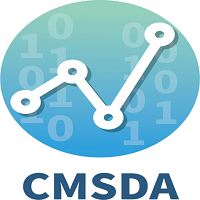
Call for papers
Call for Papers for 2024 4th International Conference on Computational Modeling, Simulation and Data Analysis (CMSDA 2024) is now OPEN!
Topics of interest for submission include, but are not limited to:
| Modeling and simulation | Data analysis |
Model Verification and Validation Intelligent and Expert Systems Network Modeling Discrete Event and Data Simulation Industrial Simulation Modeling Robotic System Simulation Educational Modeling Materials Engineering Simulation Power System Simulation Fuzzy Modeling Process Simulation and Modeling Performance evaluation and modeling Simulation languages and tools for wireless systems | Data Mining Big Data Visualization Computer Simulation Model Optimization Model Visualization Modeling Analysis Linear Regression Analysis Multimodal Interaction Deep Learning Data Classification |
Note:
1) Both Abstract and Full Paper are welcomed. The author can make an oral presentation after the Abstract is accepted and the payment is finished.
2) All submitted articles should report original, previously unpublished research results, experimental or theoretical. Articles submitted to the conference should meet these criteria and must not be under consideration for publication elsewhere. We firmly believe that ethical conduct is the most essential virtual of any academic. Hence any actof plagiarism is a totally unacceptable academic misconduct and cannot be tolerated.
Editorial Policy
All
new manuscripts to CMSDA 2024 conference should be submitted directly
via AIS Scholar. By using the online system, you can access and process
submitted papers from anywhere with internet access, and all the records
including files and exchange will be maintained.
Step
1. To keep scientific integrity, one of our editors will run Turnitin
on each new submission to see if has a problem with possible plagiarism.
Papers not passing the plagiarism check will be desk rejected
immediately.
Step 2. Then the publication
chairs will have an initial check on the new submission to ensure if
it's within the scope of the conference, and decide if it merits further
review. If the new manuscript passed the initial check, it will be
assigned to reviewers for double-blind peer review.
Step
3. Each selected paper will be reviewed by at least two/three
independent experts with related research backgrounds mainly on
originality, validity, quality and readability.
Step 4. Review Reports received from the experts will be judged by one of the editors with international scientific standards.
Step
5. If logical, then Review Reports will be sent to authors to modify
the manuscript accordingly. If not logical, then the editor can assign a
new reviewer or can also judge on his/her own.
Step 6. Authors will be required to revise their papers according to the points raised.
Step
7. The revised version will then be evaluated by the editor whether the
points raised by the reviewers have been addressed or not.
Step 8. Then the editor will send the revised manuscript to the reviewers again for re-evaluation.
Step
9. If the reviewers approve the revised version of the manuscript, then
the Editor-in-Chief will make the final decision for the publication.

